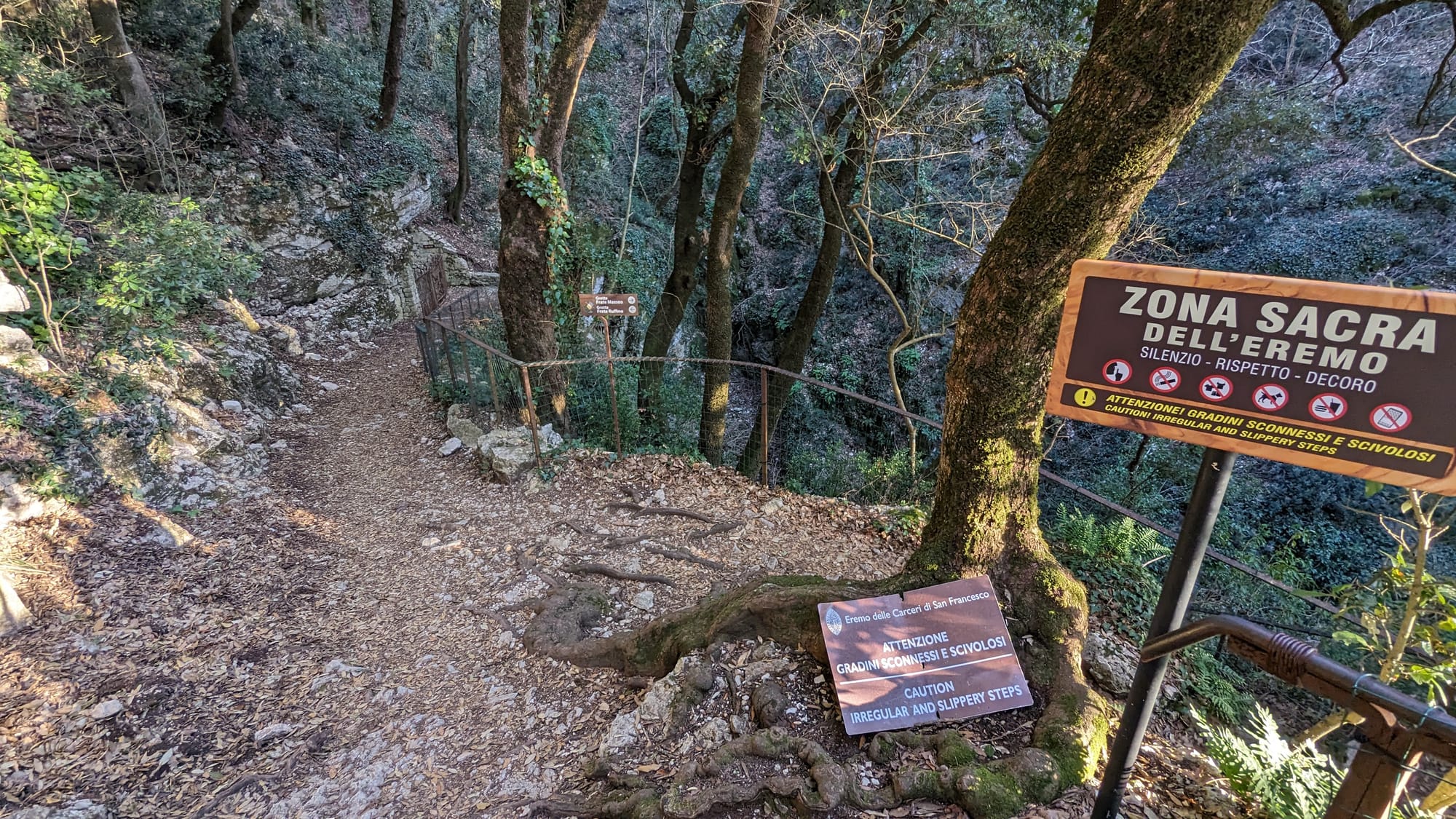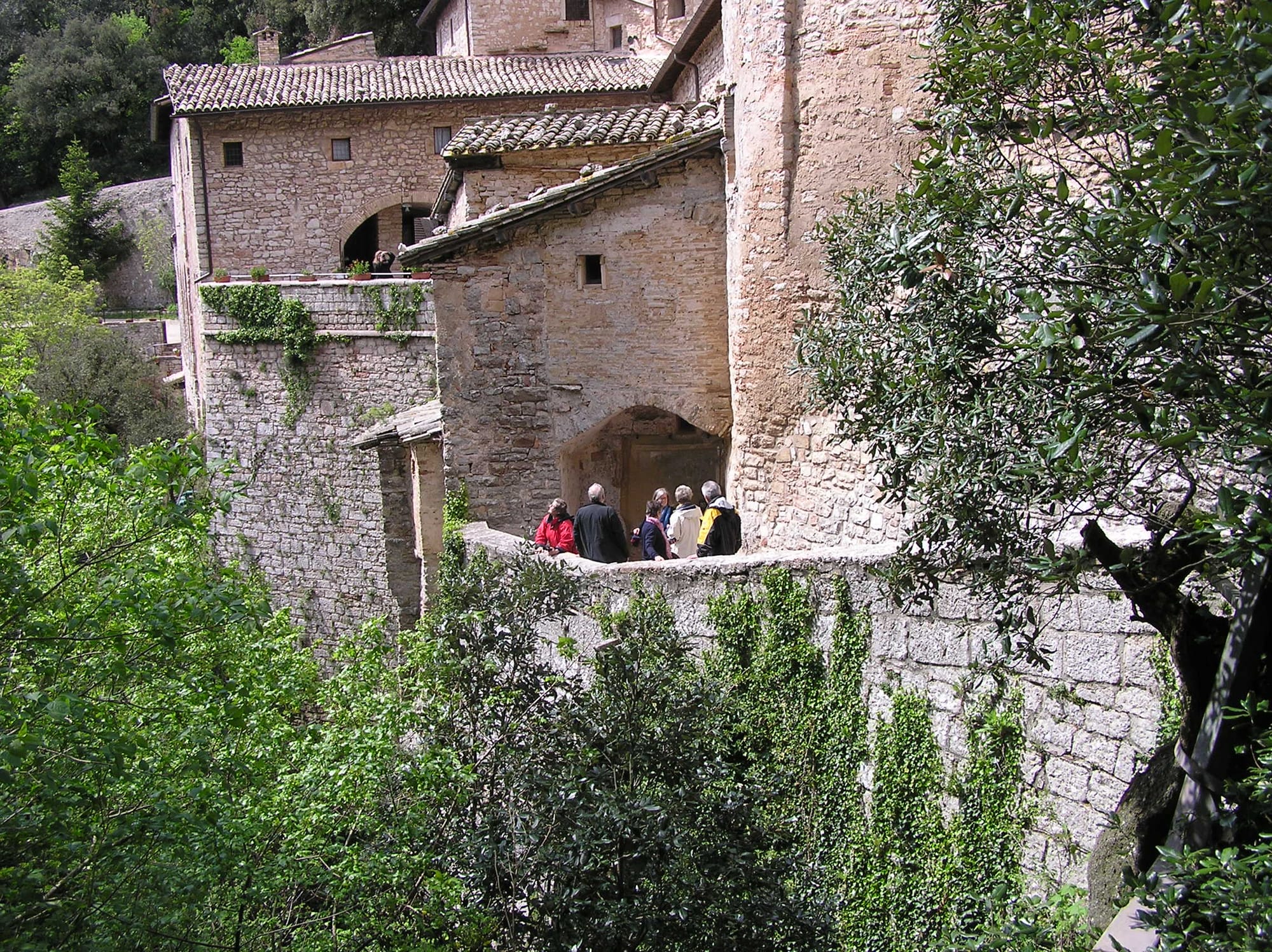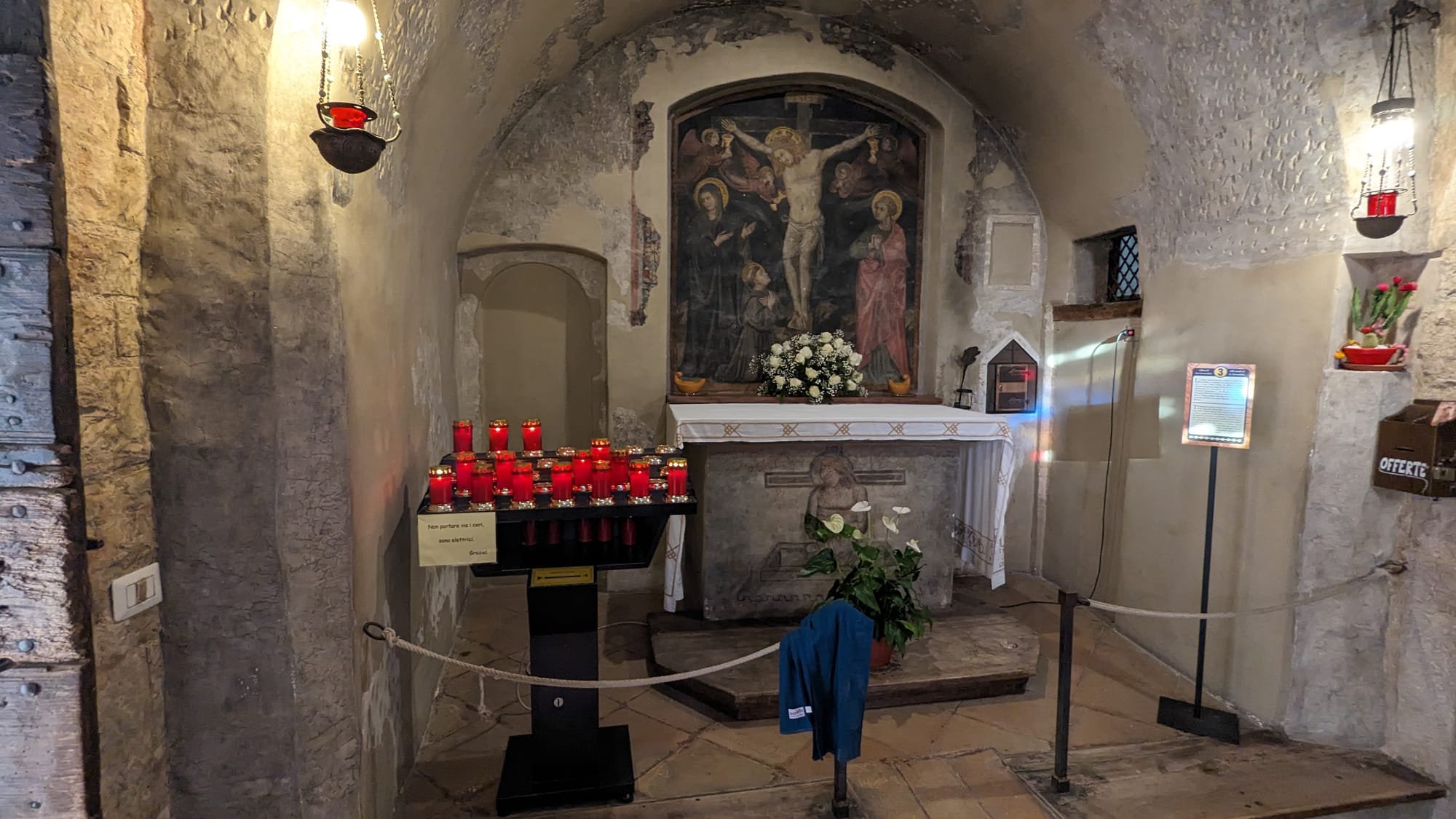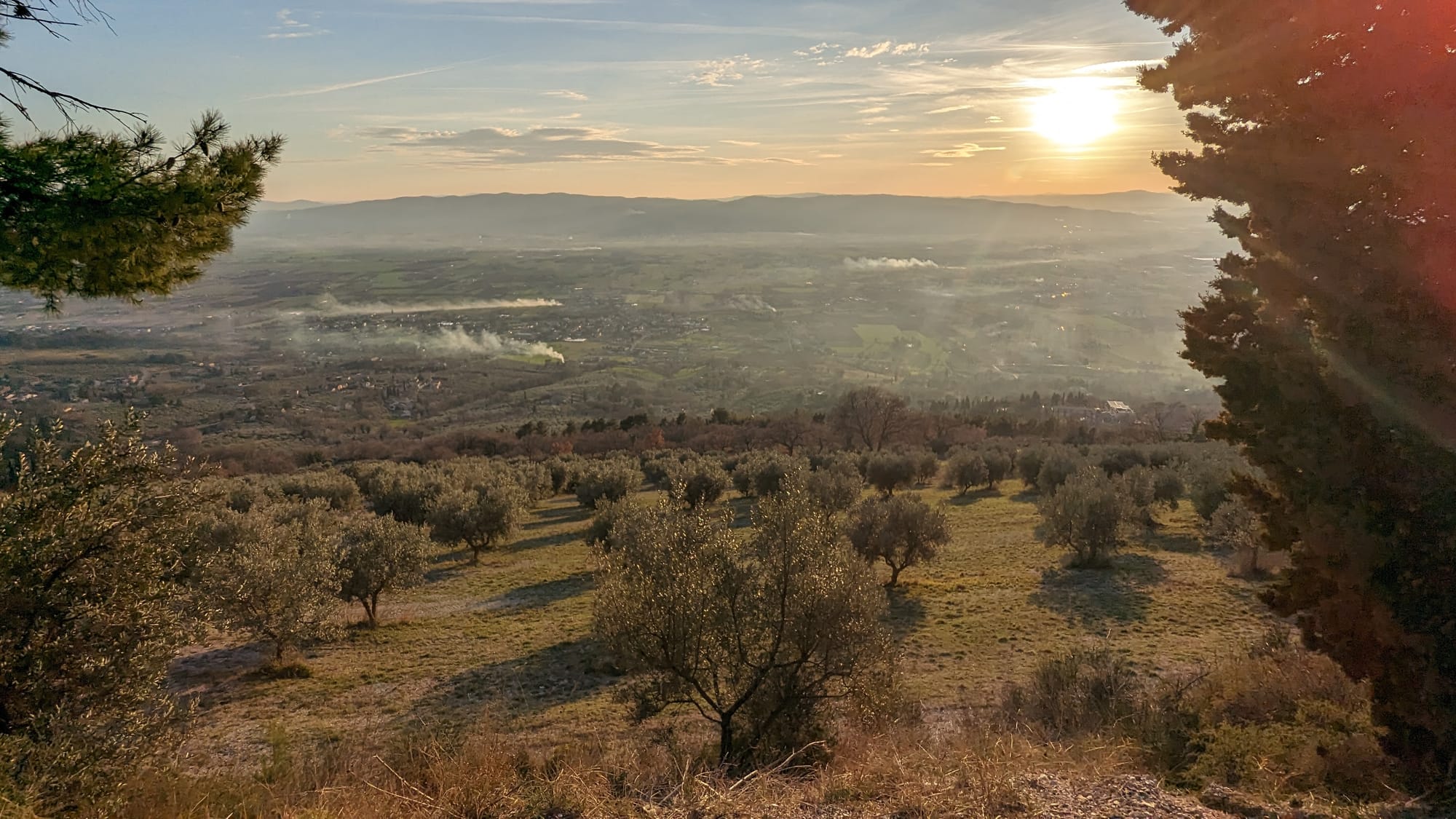The Catholic Church celebrates the feast day of one of her most beloved saints on Oct. 4: Saint Francis of Assisi.
The city of Assisi in Italy, where Saint Francis was born and lived, is nearly as famous as the saint himself and is a popular pilgrimage site.
Some of its attractions include the Basilica of Saint Francis (where he is buried), the Portiuncula church (where he founded the Franciscan order), and the Church of San Damiano (where the Lord spoke to him from a crucifix).
There are, however, many more sites to explore while in Assisi, among them the Eremo Delle Carceri, a hermitage where Francis often went on retreat.
I had the privilege of going on a day pilgrimage to Assisi last February. The city's hilltop setting truly makes it seem like a "city on a hill that cannot be hidden." (Matt 5:14)
Visiting the sites connected to Saint Francis’ life, especially his tomb at the basilica, was deeply moving.
To round up the day, I hiked up Mount Subasio to the Eremo delle Carceri, just outside Assisi.

My walk up to the hermitage, which lasted an hour and a half, provided ample time for reflection amidst the beauty of God's creation.
I thought of the many times Saint Francis walked that same path while contemplating God in nature. I also recalled this phrase of his famous Canticle of the Creatures:
“Praised be You, my Lord, through our Sister Mother Earth, who sustains and governs us, and who produces various fruit with colored flowers and herbs.”

What is the Sanctuary of Eremo delle Carceri?
The Eremo delle Carceri is a hermitage built around the cave where Saint Francis often retreated for prayer. He first discovered the cave as a prisoner of war during the Battle of Collestrada in 1202. Years later, at the height of his fame, he returned here with some followers for silent prayer and discernment.
The name "delle Carceri" reflects this purpose, meaning, "isolated places" or "prisons," signifying a retreat from worldly distractions.
Most of the present-day hermitage was built by another Franciscan saint, San Bernardino of Siena, shortly after Saint Francis’ death. Inside the hermitage, I first visited the church of San Bernardino, a small church containing a 15th-century fresco of the crucifixion.

I then visited the Oratory of Our Lady of the Carceri, the oldest building at the hermitage, built directly above Saint Francis’ cave.
Then, through a narrow staircase, I entered Saint Francis’ cave. I found praying here just as moving as praying at his tomb. From the cave, I entered a room containing what is called “The Devil’s Hole.”
The story goes that a friar was plagued by the devil’s temptations and turned to Saint Francis for help. He told him to reply to the devil with a rather crude phrase:
“Open your mouth, and I will defecate in it!”
He did so, causing the devil to flee, leaving a crevice in the floor – the "Devil's Hole."
I also visited some of the other oratories and caves. I was surprised that some oak trees have existed there since Saint Francis' time.
The rest of my walk, including my descent, provided a profound sense of peace and contemplation, much like Saint Francis would have experienced. It was something I could not experience in the city of Assisi below.

I encourage all to attend a pilgrimage to Assisi if they are able and visit the Eremo delle Carceri. Here, one can escape the noise of the world to experience God’s creation in all its beauty. Its tranquil setting also allows for better contemplation, recognizing God not in the worries of life but in “a light silent sound.” (1 Kings 19:12)


